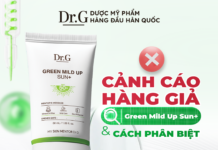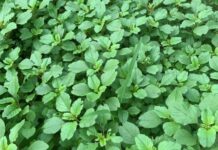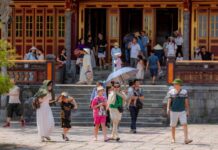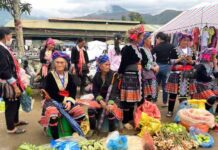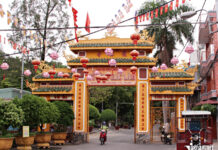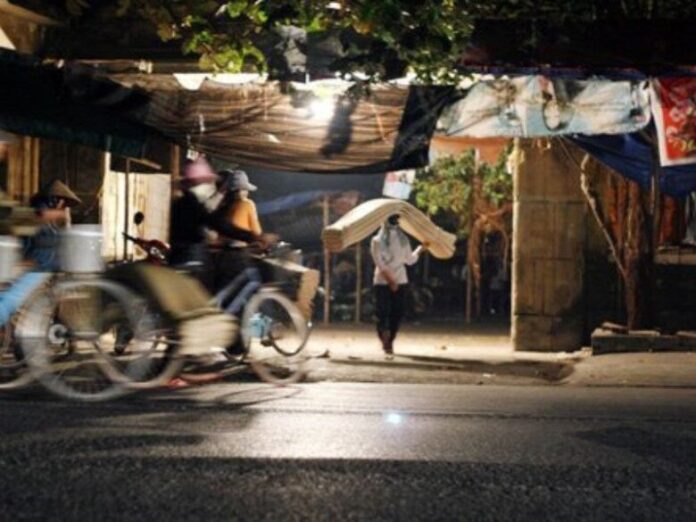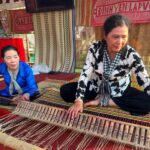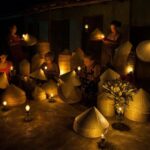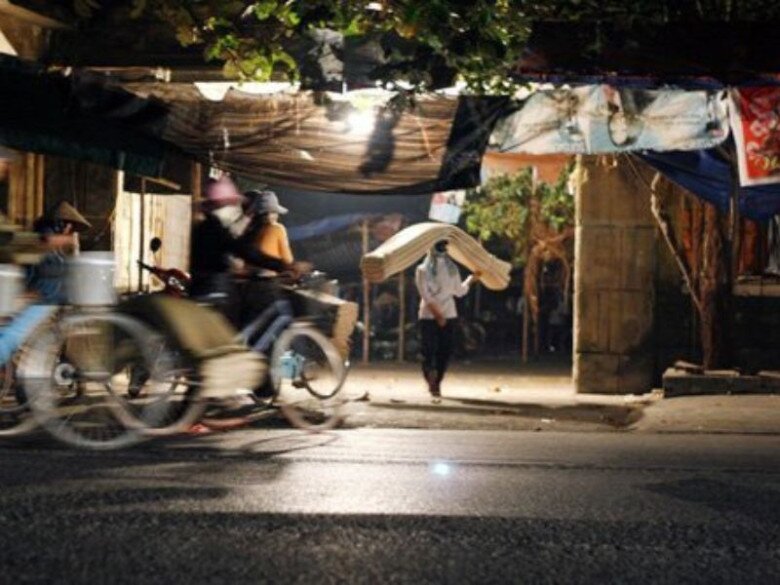
An eerie sight greets visitors to this unique market, with rows of white mats standing upright in the semi-darkness. Locals cannot pinpoint the exact origin of this odd timing, but they know that on the 4th, 9th, 14th, 19th, 24th, and 29th days of the lunar calendar, the Dong Bang mat market springs to life at midnight.
The market gate opens right onto National Highway 10, and while buyers once used oil lamps to inspect the goods, today they mostly rely on torchlights.
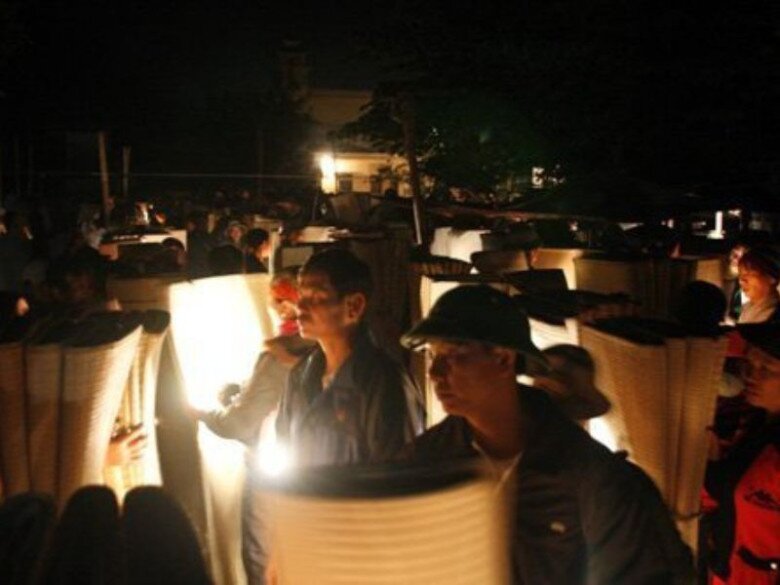
The market for raw materials, mainly the fiber used to make the mats, starts earlier. A bundle of this fiber, weighing around 1.5 kg, costs between 70,000 and 80,000 VND and is enough to make a pair of 1.6-meter-long mats. Thinner fibers are usually preferred as they are easier to sell.
Buyers and sellers alike enjoy the surreal atmosphere of this “underworld” market, as the dim lighting can hide flaws and benefit both parties. Hundreds of people flock to this market, with the crowd peaking at around 2 am. According to the elderly locals, this is an age-old tradition, and no one knows exactly how it started.
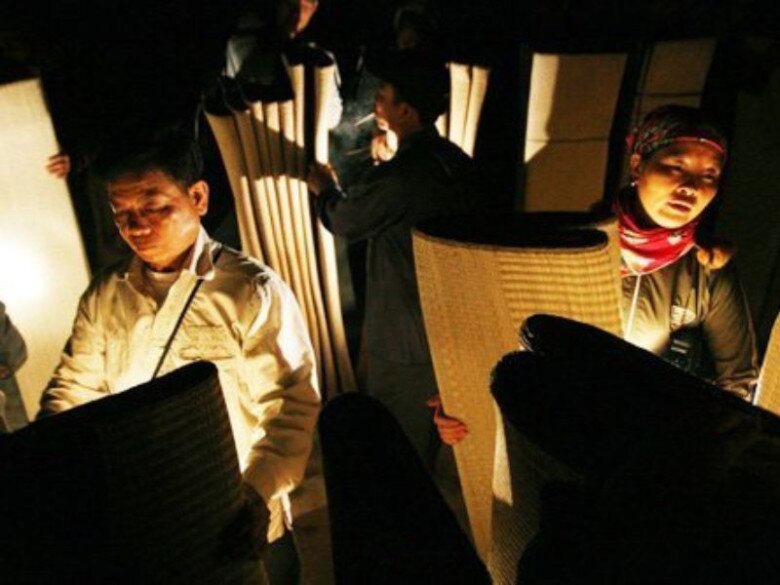
Sellers set up their mats in narrow rows, creating a maze-like arrangement for shoppers to explore. Wholesale buyers come equipped with flashlights to inspect the merchandise. To assess the quality of a mat, one simply needs to shine their light on it—high-quality mats will have white fibers, straight and evenly spaced weaving, and a sturdy build.
The best mats are thick, shiny, and made of white, tightly woven fibers. Inferior mats, on the other hand, tend to be thin, with sparse fibers and a dull green color. Prices vary depending on quality, with the finest mats fetching a few hundred thousand dong, while lower-quality ones sell for just a few dozen thousand.
Traders from far and wide come to this market to buy these white mats, which they will later dye, steam, and sun-dry before selling them on. This traditional craft not only preserves cultural heritage but also provides a substantial income for locals during agricultural off-seasons.
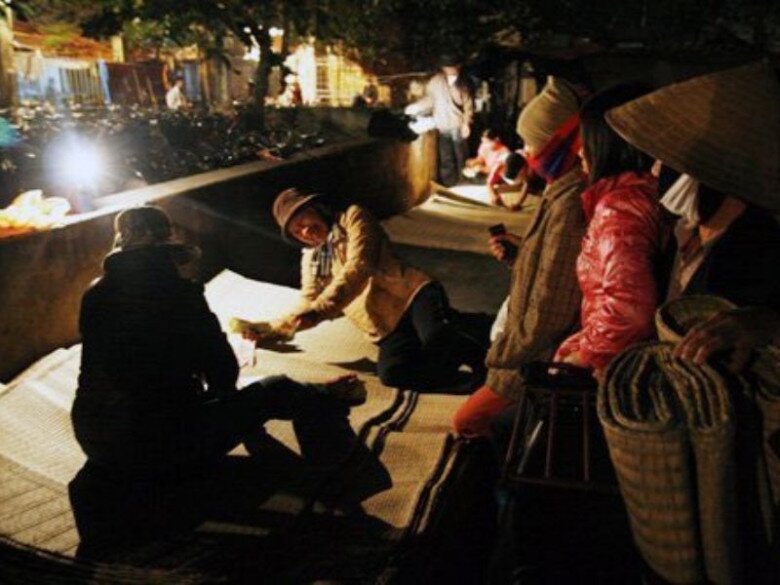
The market is a fleeting phenomenon, wrapping up by 4 am. Those who haven’t sold all their mats by then pack up and head home to continue weaving, preparing for the next market. Buyers who have gathered enough stock also leave promptly, only to return when the market reopens.
According to the elderly locals, this market has been called the “ghost market” or “underworld market” for as long as they can remember. While the night market has a history spanning hundreds of years, it has only been bustling for the last 30 or so. The reason for the nocturnal timing remains a mystery, although some speculate that it may be due to a historical lack of space for a daytime market, which eventually became a tradition.
In recent years, the introduction of machine-woven mats has led to a decline in the market’s popularity. Nevertheless, around 40% of the workforce in An Le commune still practices the traditional craft of mat-weaving, and the area is recognized as a traditional mat and fiber weaving village. The region’s cultivation of the fiber plant has decreased significantly, with farmers opting for rice and other crops instead, leading to a reliance on imports from Thanh Hoa province. Despite the higher cost of these imports, hand-woven mats remain superior in quality to machine-made ones and are favored by consumers, ensuring the survival of this nocturnal market to this day.



